Have you ever observed how many smart devices you have in your house? In the era of technology, more and more smart home technologies are integrating into our daily lives, including devices for those with low vision. In order for people with low vision to live an independent life, smart home technology plays a vital role.
Key Smart Home Technology for Low Vision
Common key smart home technology for people with low vision may include voice-activated assistants, smart lighting systems, and smart home security technologies. They all significantly contribute to improving accessibility and safety for those with low vision. Let’s explore each of these key smart home technologies in more detail:
Voice-Activated Assistants
Control of Home Devices: Voice-activated assistants, such as Amazon Alexa and Google Assistant, allow users to control various smart home devices using voice commands. Playing music, setting reminders, and more functions won’t be difficulty with the help of this type of assistants.
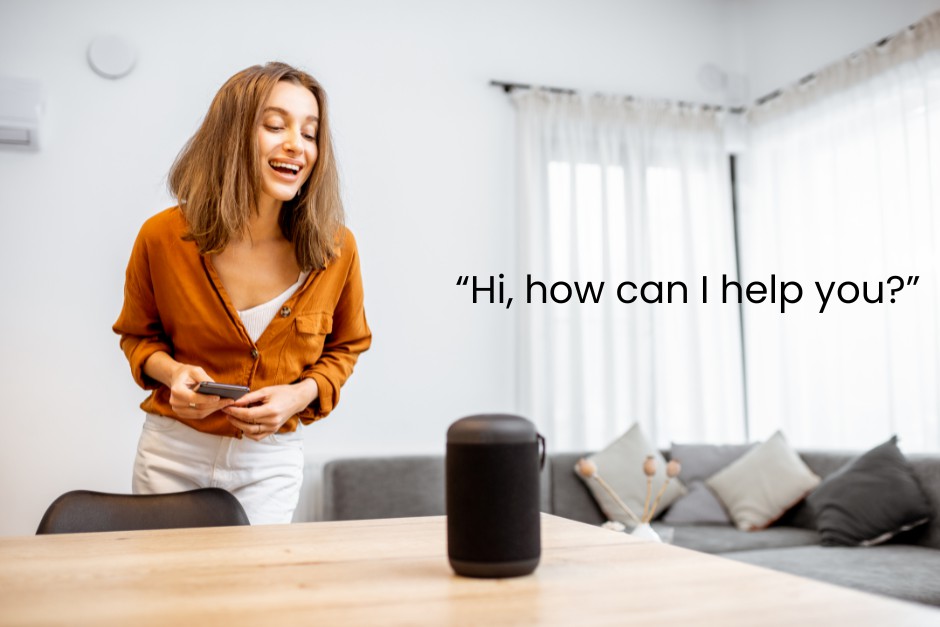 Hands-Free Convenience: For people with low vision, the hands-free nature of voice commands is particularly beneficial. It eliminates the need for physical interaction with devices, making it much easier for them to operate the voice-activated devices and better control them.
Hands-Free Convenience: For people with low vision, the hands-free nature of voice commands is particularly beneficial. It eliminates the need for physical interaction with devices, making it much easier for them to operate the voice-activated devices and better control them.
Customizable Routines: With the rapid development of modern technology, voice-activated assistants now often enable users to create personalized routines. For instance, a morning routine could involve adjusting the thermostat, turning on specific lights, and receiving the day’s schedule—all initiated by a single voice command. This feature can especially help people with vision loss to start an abundant day and manage their daily routines positively.
Smart Lighting Systems
Color Temperature Adjustments: Smart lighting systems allow users to adjust the color temperature of the lights. This is a crucial function for individuals with low vision, as they can customize the lighting to their comfort, reducing eye strain and improving overall visibility.
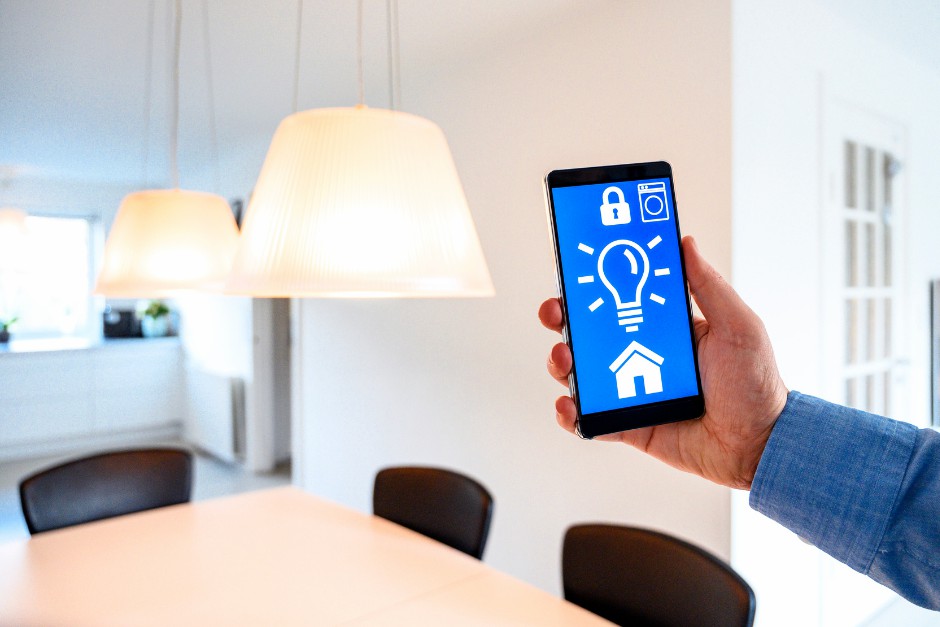 Voice-Controlled Dimming: The smart home devices with voice control feature are becoming more and more popular. With simple voice commands, users can dynamically control the brightness of lights. This feature is definitely useful for those with visual impairments, allowing them to adapt the lighting to different activities without the need for manual adjustments.
Voice-Controlled Dimming: The smart home devices with voice control feature are becoming more and more popular. With simple voice commands, users can dynamically control the brightness of lights. This feature is definitely useful for those with visual impairments, allowing them to adapt the lighting to different activities without the need for manual adjustments.
Integration with Sensors: Smart lighting systems can be integrated with motion sensors, automatically illuminating pathways or rooms as soon as motion is detected. This function can be a proactive approach to enhance accessibility and navigation, making it safer and more convenient for visually impaired people.
Smart Home Security
Integration with Smart Locks: Some smart home security systems integrate with smart locks, enabling users to remotely lock or unlock doors through the same interface. This seamless integration enhances accessibility, especially for those with low vision who may face challenges with traditional locks.
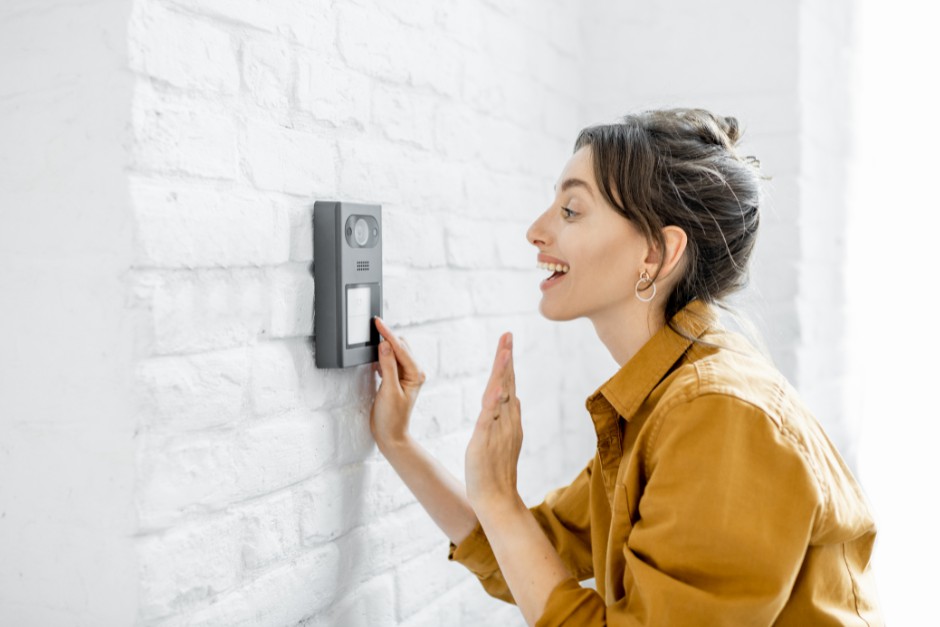 Two-Way Communication: Smart doorbells and cameras often feature two-way communication, allowing users to not only see but also interact with visitors. This is beneficial for people with low vision as it provides the ability to identify visitors without opening the door, which greatly increases the safety for low vision people who live independently.
Two-Way Communication: Smart doorbells and cameras often feature two-way communication, allowing users to not only see but also interact with visitors. This is beneficial for people with low vision as it provides the ability to identify visitors without opening the door, which greatly increases the safety for low vision people who live independently.
Voice-Activated Security Commands: Users can arm or disarm security systems using voice commands, providing a hands-free and convenient way to manage home security. Obviously, this feature ensures that individuals with low vision can easily engage with and control their security systems.
Safety Experiences: Emphasizing safety, smart home security provides real-time monitoring and alerts. Smart doorbells, for example, help users see and communicate with visitors, enhancing security by allowing remote verification of individuals at the door.
Adaptable Home Environments
Except for the above-mentioned common smart home technology for visually impaired people, creating an adaptable home environment can also be achieved through smart home technologies. For instance, an adaptable home environment can feature automated climate control systems and smart blinds or curtains, offering numerous benefits for visually impaired people in terms of comfort, convenience, and energy efficiency. Let’s delve into the advantages of each of these technologies:
Automated Climate Control
Energy Efficiency: Automated climate control systems optimize energy usage by adjusting temperature settings based on occupancy and external conditions. This not only reduces energy consumption but also contributes to cost savings over time.
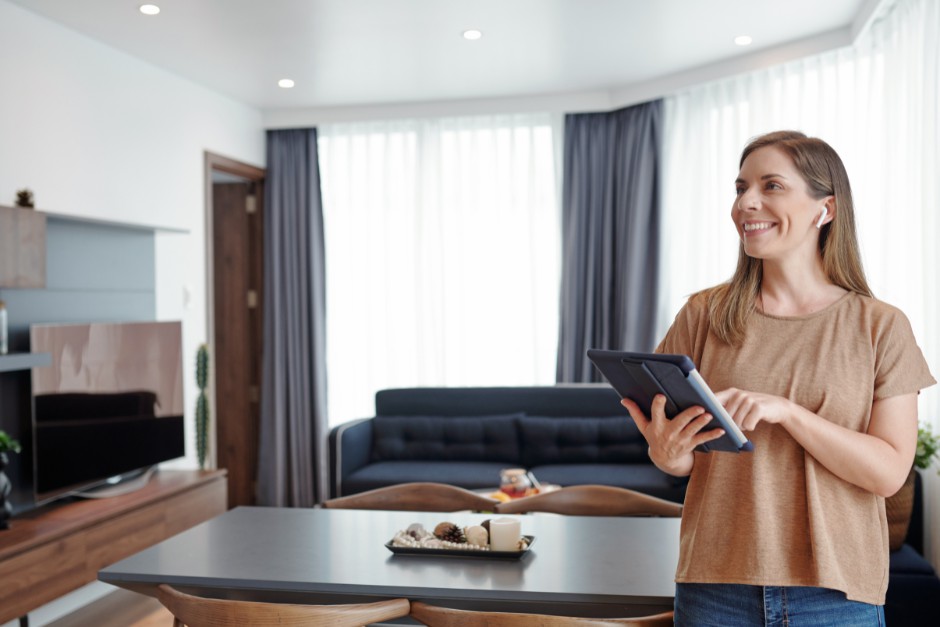 Individualized Comfort: Automated climate control systems allow users to customize temperature settings to their preferences, promoting customized comfort within different areas of the home. For individuals with specific temperature sensitivity, such as those with certain medical conditions, this adaptability is particularly valuable. It can help visually impaired people create a comfortable physical environment, which can reduce their eye fatigue and be beneficial to their eye conditions.
Individualized Comfort: Automated climate control systems allow users to customize temperature settings to their preferences, promoting customized comfort within different areas of the home. For individuals with specific temperature sensitivity, such as those with certain medical conditions, this adaptability is particularly valuable. It can help visually impaired people create a comfortable physical environment, which can reduce their eye fatigue and be beneficial to their eye conditions.
Humidity Management: In addition to temperature control, some automated systems can also manage humidity levels. Maintaining optimal humidity is crucial for comfort and can have health benefits, especially for individuals with respiratory issues or eye disorders, proper home humidity can always make them feel better.
Smart Blinds and Curtains
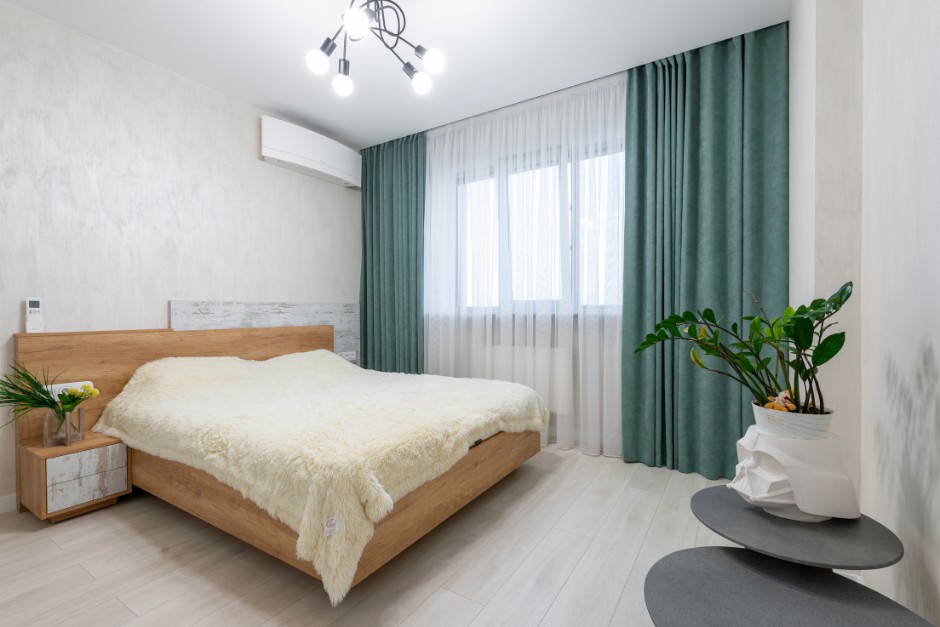 Remote Control and Automation: Automated window coverings can be controlled remotely through smart home apps or voice commands. This feature is beneficial for individuals with limited mobility or those with low vision who may find it challenging to manually adjust blinds or curtains.
Remote Control and Automation: Automated window coverings can be controlled remotely through smart home apps or voice commands. This feature is beneficial for individuals with limited mobility or those with low vision who may find it challenging to manually adjust blinds or curtains.
Impact on Natural Light: Smart blinds and curtains offer precise control over the amount of natural light entering a room. Users can adjust the positioning of window coverings to regulate light exposure, reducing glare and creating a more comfortable living environment. Low vision people who can still use their residual vision can be more efficient in working or studying with the help of this type of technology.
Assistive Devices Integration
Smart home technology brings significant convenience to people with low vision, creating a home environment more suitable for their independent living. However, some tasks and trivial details in daily life are still inseparable from the support of some low vision devices, such as screen readers and electronic video amplifiers. The combination of these devices and smart home technology can provide users with more comprehensive and detailed support, creating a better user experience.
Take electronic video magnifier as an example, it plays a key role in daily life and provides a wider range of support for low vision users. These assistive devices are not limited to smart homes, but cover many fields, including reading, learning, document processing, handicrafts and other daily projects.
When it comes to reading and learning, electronic video magnifiers enable users to read books, newspapers and documents more clearly by magnifying text in real time, which provides them with wider access to knowledge. In terms of document processing, digital magnifiers allow people to view details in documents more carefully, helping to process documents that are complex or require precise observation. Some electronic video magnifiers, such as Zoomax Snow 12, also have the OCR/text-to-speech function, making it easier and more convenient for users to study or work.
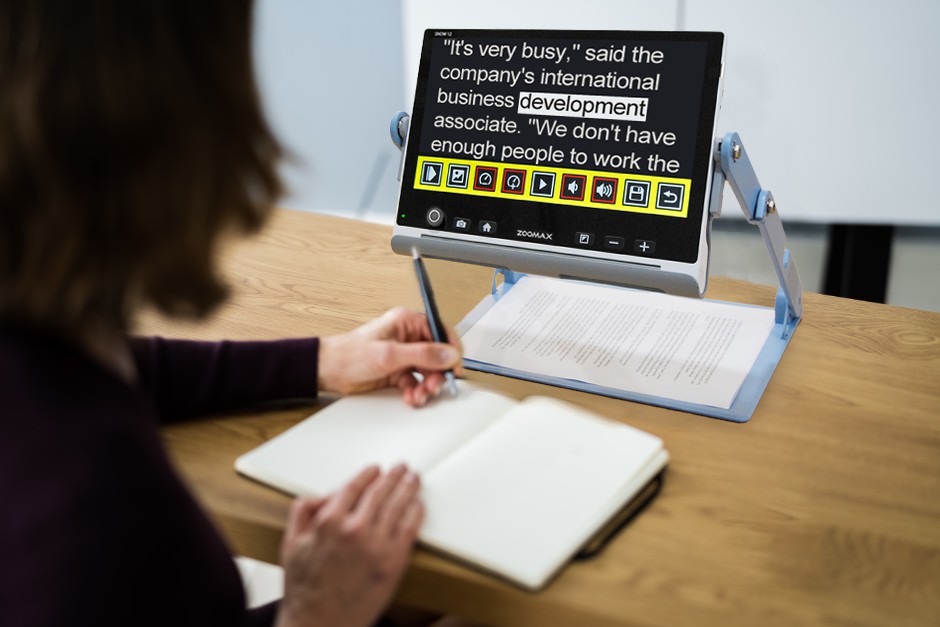
For entertainment activities, many visual aids can help visually impaired people proceed with crafts and artistic activities. For instance, the electronic video magnifier’s detail viewing capabilities enable users to perform fine work with greater precision. This is extremely helpful when working on crafts, painting, or other art projects, increasing the low vision independence and enhancing user experiences in these areas.
Overall, low vision assistive devices such as electronic video magnifiers play an important role in daily life, creating greater independence and convenience for the low vision community. Smart home technology may create a fantastic living environment for visually impaired individuals, however, with the assistance of more compact assistive technologies, they can complete more tasks in their daily lives and truly live independently. As low vision individuals become more confident, their families and friends are going to be happy for them as well.

